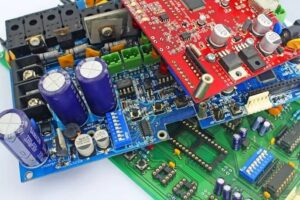Several considerations must be made when designing an electronic circuit. The selection of the appropriate passive components is among the most crucial of them. These parts form the foundation of every circuit, performing a variety of tasks, including supplying resistance or capacitance, transmitting signals, and establishing physical connections. It is crucial to take into account these components’ electrical qualities and performance traits, as well as their price, size, and operating environment, while selecting them for your circuit.
When selecting a passive component for your electronic device, it is important to consider factors such as reliability, cost, and size. Reliability is a key factor as it can determine the lifespan of your device and the satisfaction of your customers. Cost is also an important factor to consider, as it can have a direct impact on the profitability of your product. Size is also a factor to consider, as it determines how much space is available for other passive components in the device. It is important to research the various components available on the market to ensure that the component you are selecting meets all of your needs. Make sure it is compatible with the other components in your device to ensure that the device functions properly.
Evaluate The Electrical and Thermal Performance Requirements for the Application
It is important to evaluate the electrical and thermal performance requirements of any application prior to implementation. This evaluation will help determine if the application meets the necessary performance expectations and can provide insight into potential issues that may arise. Electrical performance requirements should be thoroughly evaluated to ensure the application is capable of performing at the desired level. This includes an examination of the voltage, power, current, frequency, and other electrical parameters.
Similarly, thermal performance requirements should be examined to ensure the temperature of the application remains within the operational range. This should include ambient temperature, thermal load, and other thermal variables. By evaluating the electrical and thermal performance requirements of an application, potential issues can be identified and addressed prior to implementation.

Consider The Size and Form Factor of the Passive Component
When it comes to selecting passive components for a printed circuit board, it is often overlooked how important size and form factors can be. There is more to consider than just the electrical characteristics of the component. The size, shape, and mounting of the component can affect the cost, manufacturability, and reliability of the finished PCB.
Consider both size and form factors when choosing a passive component for your upcoming design project. When there is limited room, one of your primary considerations should be the component’s size. The electrical characteristics of a small surface mount component, for instance, might be identical to those of a large through-hole component. Still, the surface mount option is much smaller and is, therefore, easier to include in a design with tight space restrictions. Additionally, the component’s shape factor is crucial. Depending on the application, you might need to choose a component with particular features, including one that is enclosed in an epoxy-filled container, has a surface mount or through-hole design, or both.
